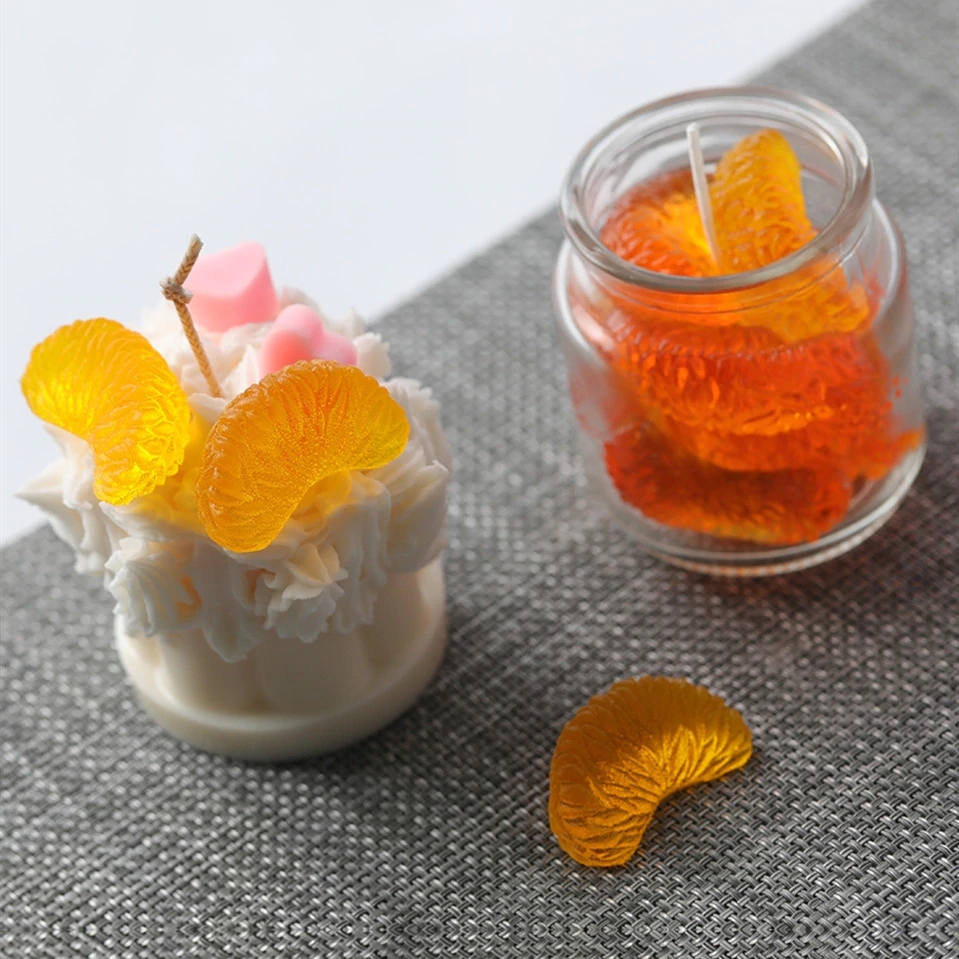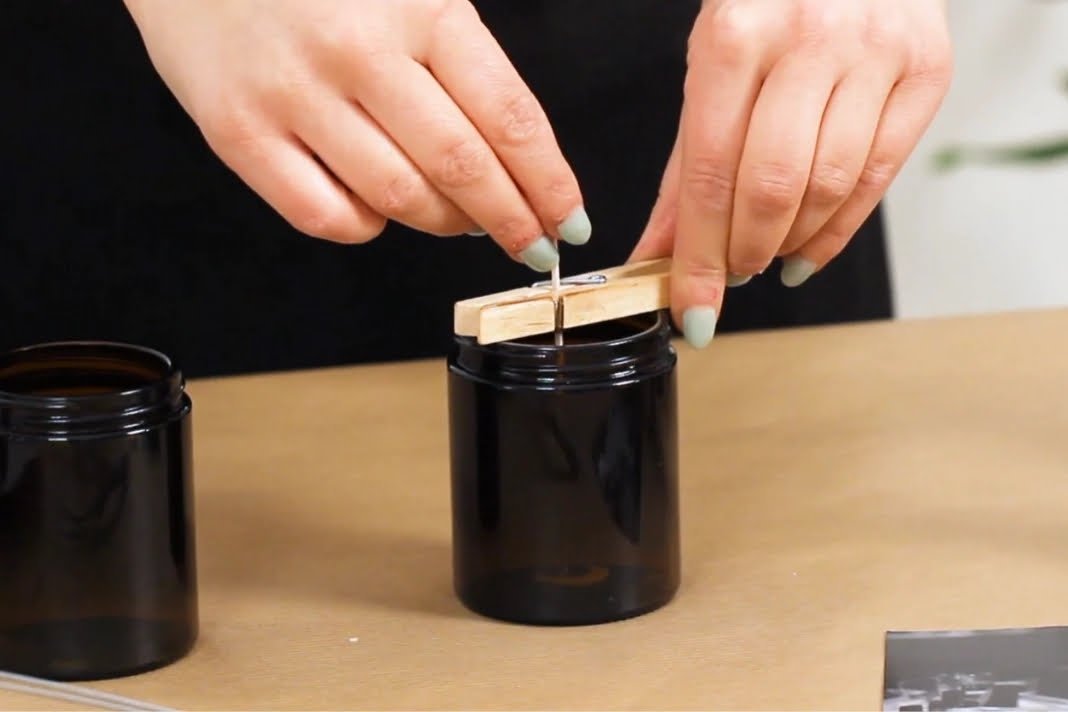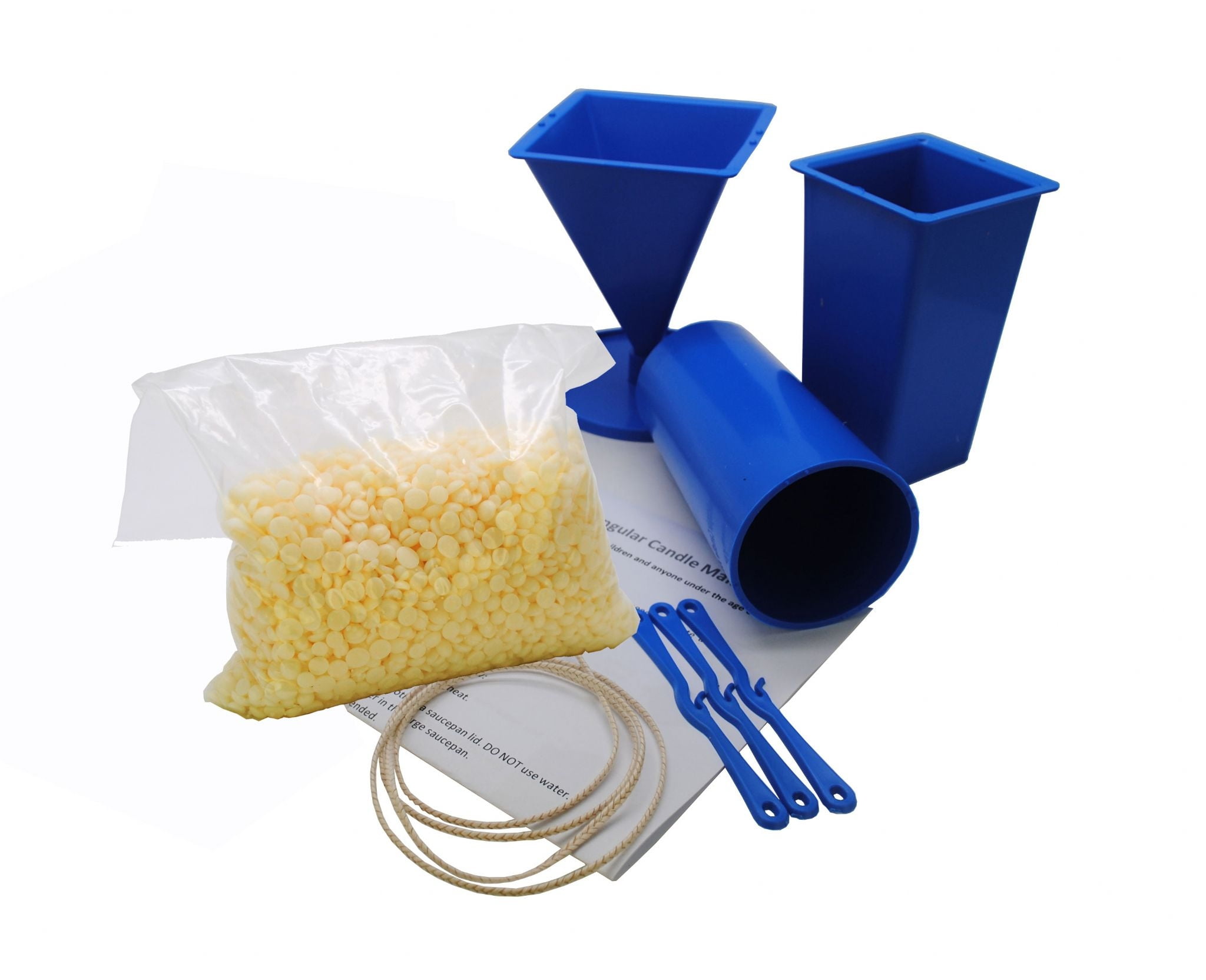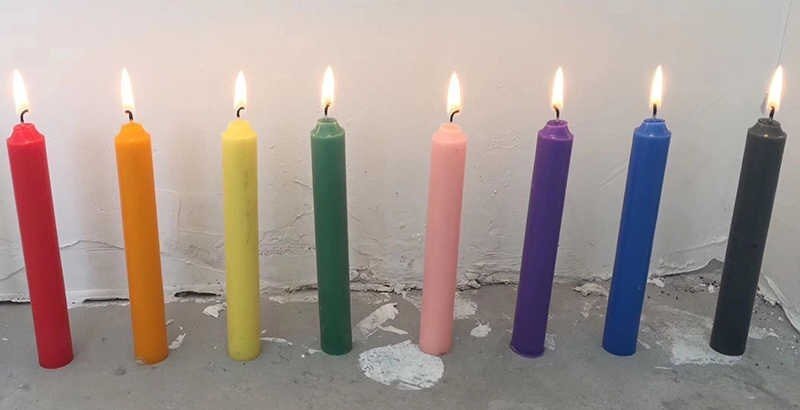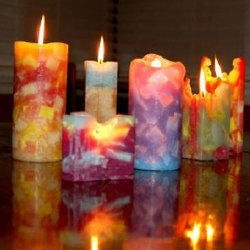Are you interested in exploring the art of candle making with soy wax? Temperature control is a critical element in this process, influencing everything from the texture to the scent throw of your candles.
In this article, we will delve into the basics of candle making with soy wax, highlighting the benefits of using this natural material and emphasizing the importance of temperature regulation throughout the entire process. Whether you’re a novice or experienced candle maker, understanding how temperature affects soy wax can significantly impact the quality and success of your creations.
Soy wax has become a popular choice for candle making due to its natural origins and clean-burning properties. However, achieving optimal results with soy wax candles requires careful attention to temperature.
From melting the wax to cooling it after pouring, maintaining the right temperature range is crucial for ensuring that your candles turn out as desired. By delving into the specifics of temperature control in soy wax candle making, you can enhance both the visual appeal and olfactory experience of your creations.
In this comprehensive guide, we will discuss everything from selecting the ideal temperature for various stages of the candle making process to troubleshooting common temperature-related issues. We will also explore how experimenting with different temperatures can lead to unique designs and effects in your candles.
Additionally, we will provide important safety precautions to keep in mind when working with heat sources and temperature-sensitive materials during candle making with soy wax. So, if you’re ready to elevate your candle making skills by mastering temperature control, read on.
The Importance of Temperature Control
When it comes to candle making with soy wax, temperature control is a crucial factor that greatly influences the quality, texture, and scent throw of the finished products. Understanding the impact of temperature on these aspects is essential for creating beautiful and fragrant soy wax candles.
Temperature directly affects the quality of soy wax candles in several ways. Firstly, the melting point of soy wax is lower than that of other waxes, so maintaining the right temperature during the melting process is crucial to prevent burning or discoloration. Additionally, the pouring temperature plays a significant role in determining the texture of the candle, as pouring at too high or too low a temperature can result in uneven surfaces or frosting.
Proper temperature control also has a direct impact on the scent throw of soy wax candles. Scent oils need to be added at specific temperatures to ensure that they are properly dispersed throughout the wax. Failing to adhere to these temperature guidelines can result in weak or uneven fragrance distribution. Therefore, being mindful of temperature fluctuations throughout the candle making process is essential for achieving consistent and long-lasting scent throw in soy wax candles.
- The Importance of Temperature Control in Candle Making:
- Impact on quality, texture, and scent throw
- Melting point considerations
- Pouring temperature effects
- Temperature’s Influence on Scent Throw:
- Adding fragrance oils at specific temperatures
- Consistent and long-lasting fragrance dispersion
- Achieving High-Quality Results through Temperature Management Techniques:
- Maintaining precise control throughout each stage
- Optimal texture, appearance, and scent throw
Choosing the Right Temperature
When it comes to making soy wax candles, temperature is a critical factor that can significantly impact the quality and characteristics of the final product. To achieve optimal results, it’s essential to understand the ideal temperature range for melting, pouring, and cooling soy wax. By choosing the right temperature, candle makers can ensure that their creations have a smooth texture, excellent scent throw, and even burn.
1. Melting Temperature:
The first step in making soy wax candles is melting the wax. It’s important to heat the soy wax to the correct temperature to ensure that it fully liquifies without becoming too hot. The ideal melting temperature for soy wax is between 170°F and 180°F (76°C and 82°C). Heating the wax beyond this range can cause discoloration and affect its fragrance properties.
2. Pouring Temperature:
Once the soy wax has melted thoroughly, it’s crucial to pour it into candle containers at the right temperature. For soy wax, the recommended pouring temperature is between 135°F and 145°F (57°C and 63°C). Pouring at this range helps prevent air bubbles from forming in the candles and promotes optimal adhesion with wicks.
3. Cooling Temperature:
After pouring the melted soy wax into containers, allowing it to cool at an appropriate temperature is vital for achieving an even surface and consistent texture. The ideal cooling temperature for soy wax candles ranges from 55°F to 75°F (13°C to 24°C). Rapid cooling or exposure to extreme temperatures during this stage can result in cracking or frosting of the candles.
By paying close attention to these temperature ranges throughout the candle making process, crafters can produce high-quality soy wax candles with excellent burn performance and robust fragrance throw. It’s important to invest in proper equipment such as a reliable thermometer and heat source control tools for precise temperature regulation during each stage of candle production.
Additionally, experimenting with different temperatures can lead to unique designs and effects in soy wax candles if done carefully while considering safety precautions when working with temperature-sensitive materials is necessary for a successful candle making experience.
Tools and Equipment
When it comes to candle making with soy wax, maintaining proper temperature control is essential for achieving the best results. In order to ensure that the soy wax is melted, poured, and cooled within the ideal temperature range, it is important to have the right tools and equipment on hand.
One of the most crucial pieces of equipment for temperature control in soy wax candle making is a reliable thermometer. A thermometer allows you to monitor the temperature of the melted wax, ensuring that it does not exceed or fall below the recommended range. A double boiler or a dedicated wax melting pitcher is also essential for gently and evenly melting the soy wax without exposing it to direct heat, which can cause overheating.
Additionally, having a heat source such as an electric hot plate or a stove with precise temperature controls can make a significant difference in maintaining a consistent melting temperature for the soy wax. It is important to avoid using open flames or microwaves for melting soy wax, as these methods can lead to uneven heating and pose safety risks.
Furthermore, investing in quality pouring pitchers, stirring utensils, and heat-resistant containers for cooling the candles will contribute to better temperature management throughout the candle making process. These tools and equipment not only help maintain optimal temperatures but also ensure safety and efficiency in crafting soy wax candles.
Overall, having the right tools and equipment for maintaining proper temperature control during candle making with soy wax is essential for achieving high-quality candles with excellent texture and scent throw.
| Tools and Equipment | Importance |
|---|---|
| Thermometer | Allows monitoring of melted wax temperature |
| Double boiler/wax melting pitcher | Gently and evenly melts soy wax |
| Electric hot plate/stove with precise controls | Maintains consistent melting temperature |
| Pouring pitchers/stirring utensils/heat-resistant containers | Contributes to better temperature management during cooling process |
Troubleshooting Temperature Issues
When it comes to candle making with soy wax, temperature control is key to ensuring a successful and high-quality end result. However, like any crafting process, there can be some common temperature-related problems that arise. Understanding these issues and knowing how to troubleshoot them is essential for any candle maker working with soy wax.
Frosting
One common issue that candle makers may experience when working with soy wax is frosting. This is when the surface of the candle appears to have a white, powdery film after it has cooled. Frosting can occur due to rapid cooling or changes in temperature during the cooling process.
To address this problem, one practical solution is to try and cool the candles more slowly by insulating them as they set. This can be done by placing them in a warm area or wrapping them in a towel to ensure a more gradual cooling process.
Sinkholes
Another common problem that can occur when making soy wax candles is sinkholes forming in the center of the candle as it cools. This can happen if the wax contracts too quickly during the cooling process, leaving an unsightly hole in the middle of the candle.
To prevent sinkholes, one practical solution is to pour the wax at a slightly higher temperature and allow it to cool more gradually. Additionally, gently poking relief holes in the top of the candle as it cools can help release air pockets and prevent sinkholes from forming.
Uneven Cooling
Uneven cooling can also be a challenge when making soy wax candles, leading to variations in texture and appearance across different parts of the candle. To address this issue, one practical solution is to use proper insulation techniques during the cooling process. For example, placing candles in a room-temperature environment or using insulated containers can help promote even cooling and prevent uneven texture or appearance.
By understanding these common temperature-related problems in soy wax candle making and implementing practical solutions, crafters can achieve better results and create high-quality candles with optimal texture, appearance, and scent throw.
Experimenting With Temperature
Temperature Variations for Unique Designs
One of the exciting aspects of candle making with soy wax is the ability to experiment with different temperatures to achieve unique designs and effects. By varying the temperature at which you pour the wax into your mold, you can create marbling, layered, textured, or even gradient effects in your candles. For example, pouring the wax at a lower temperature can result in a more viscous consistency, allowing for swirls and other intricate patterns to form within the candle.
Using Heat Gun or Cooling Techniques
In addition to experimenting with pouring temperatures, candle makers can also explore the use of heat guns or cooling techniques to manipulate the surface texture of their soy wax candles. Utilizing a heat gun can create interesting textures and shapes on the surface of the candle, while quick cooling methods such as placing the mold in a refrigerator or freezer for a brief period can produce unique crackling effects on the outer layer of the candle.
Blending Fragrances at Different Temperatures
Temperature can also impact how fragrance oils disperse throughout soy wax candles. Experimenting with adding fragrance oils at varying temperatures can yield different scent throw results. For example, adding fragrance oils at a slightly higher temperature may enhance their dispersion within the wax, resulting in a stronger scent throw when the candle is burned. Conversely, adding fragrance oils at a lower temperature may produce a more subtle and gradual release of aroma during burning.
Overall, experimenting with temperature in candle making allows artisans to push the boundaries of traditional techniques and unleash their creativity. By understanding how different temperatures affect soy wax and embracing experimentation, candle makers can achieve truly unique designs and effects that set their creations apart from mass-produced candles on the market.
Temperature and Fragrance
Soy wax candles can offer a clean and long-lasting burn, but achieving the best scent throw requires careful consideration of temperature when adding fragrance oils. The relationship between temperature and fragrance oils is crucial in ensuring that the scent is properly dispersed throughout the candle. When working with soy wax, it’s important to understand how temperature influences the effectiveness of fragrances in your candles.
One key factor to consider is the temperature at which you add fragrance oils to the melted soy wax. The ideal temperature for adding fragrance oils is typically between 140°F to 160°F (60°C to 71°C).
This temperature range allows the fragrance oils to properly bind with the wax, ensuring that they are evenly distributed throughout the candle. Adding fragrance oils at higher temperatures can cause them to evaporate too quickly, leading to a weaker scent throw, while adding them at lower temperatures may result in poor dispersion within the candle.
Another important aspect of achieving an optimal scent throw in soy wax candles is allowing the candles to cure at the right temperature. After pouring the melted wax and fragrance oils into their containers, it’s essential to let them cool and solidify at room temperature (approximately 70°F or 21°C). This gradual cooling process allows the fragrance molecules to disperse evenly within the candle, resulting in a more consistent and long-lasting scent throw.
In addition to proper temperatures for adding fragrances and curing candles, it’s also important to store finished soy wax candles at an appropriate temperature. Extremes in temperature can affect both the texture and scent throw of soy wax candles. It’s best to store finished candles in a cool, dry place away from direct sunlight and sources of heat, as exposure to high temperatures can cause the candles to soften or melt, resulting in diminished scent throw.
| Temperature Range | Effect on Scent Throw |
|---|---|
| 140°F – 160°F (60°C – 71°C) | Optimal range for adding fragrance oils; ensures even distribution |
| Room Temperature (approximately 70°F or 21°C) | Ideal for allowing candles to cure; promotes consistent and long-lasting scent throw |
| Extreme Temperatures (high heat or direct sunlight) | Can soften/melt finished candles; diminishes scent throw |
Safety Precautions
In conclusion, mastering the art of candle making with soy wax requires a deep understanding of the role that temperature plays in the process. From melting and pouring to cooling and fragrance infusion, every step is influenced by temperature, making it a crucial element in achieving high-quality, professional-looking candles.
Maintaining proper temperature control throughout the candle making process is essential for ensuring the desired texture, scent throw, and overall quality of soy wax candles. By choosing the right temperature range for each phase and using the appropriate tools and equipment to regulate heat, crafters can overcome common temperature-related challenges and troubleshoot any issues that may arise.
Additionally, experimenting with temperature can lead to unique designs and effects in soy wax candles. When combined with the right fragrance oils at optimal temperatures, crafters can achieve enhanced scent throw and create one-of-a-kind aromatic experiences for their customers.
However, it’s important to always prioritize safety precautions when working with temperature-sensitive materials and heat sources in candle making with soy wax to prevent accidents and ensure a safe crafting environment. By following these guidelines along with mastering temperature control techniques, candle makers can elevate their skills and produce beautiful, fragrant soy wax candles that stand out in the market.
Frequently Asked Questions
What Temperature Do You Heat Soy Wax to Make Candles?
Soy wax is typically heated to a temperature of around 170-180°F to ensure it fully melts and allows the fragrance to blend in properly. This temperature also helps reduce frosting in the finished candle.
What Temp Do You Add Color to Soy Wax?
When adding color to soy wax, it’s best to do so at a temperature between 150-160°F. This allows the color to mix evenly without discoloring or scorching the wax, resulting in a more uniform and vibrant hue in the final product.
What Happens if You Pour Soy Wax Too Hot?
If soy wax is poured at too hot of a temperature, it can result in various issues such as poor scent throw, rough or uneven surfaces, and potential cracking. It’s important to let the wax cool slightly to prevent these problems and achieve a better overall finish.

Welcome to my candle making blog! In this blog, I will be sharing my tips and tricks for making candles. I will also be sharing some of my favorite recipes.

